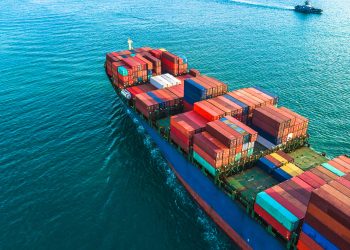LASHING WW notation
 Bureau Veritas has launched a voluntary notation for containerships which will allow more flexible container stowage depending on the ship’s loading condition.
Bureau Veritas has launched a voluntary notation for containerships which will allow more flexible container stowage depending on the ship’s loading condition.
The notation, LASHING WW, is based on ships being fitted with an approved lashing computer, which will allow computation of container stack weights and required lashing using acceleration levels corresponding to the ship’s loading condition and worldwide area of operation
Jean-Francois Segretain, Marine Technical Director, Bureau Veritas, Marine and Offshore division, says, “Current lashing and stowage rules for deck containers rely on defined transverse accelerations which are not really accurate for large modern vessels along their whole length. Our research and data from real ships in service shows that accelerations in the midships section of container vessels are always closely correlated with the natural roll period of the ship and could often be much less than those set down in the present rules for lashing calculations.
“Using the right software fitted on board, and taking into account the ship’s area of operation (worldwide or mainly in North Atlantic or North Pacific area) and loading condition, the appropriate accelerations can be used to optimise the loading plan or lashing or to allow heavier containers to be stowed higher in the tiers.”
BV’s calculations show that stack weights midships for ULCs using BV lashing software can be increased by up to 22 tonnes per container stack. Without the requirements of this notation, container ship lashing plans must be checked against the most demanding loading conditions, so requiring a maximum one-size-fits-all transverse acceleration figure. LASHING WW offers a more precise evaluation by using actual transverse accelerations without losing the safety margin.
Says Segretain, “This approach is simple and quick and offers much greater cargo and lashing flexibility without compromising safety, compared to existing rules or route-dependent systems which are still using the global assumed transversal accelerations without considering the influence of the natural roll period which varies with the loading condition of the ship.”
Source: Bureau Veritas































































